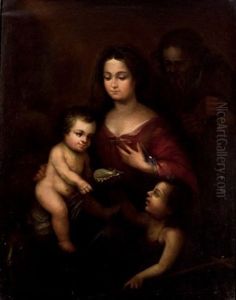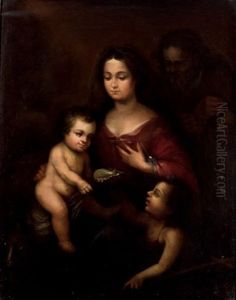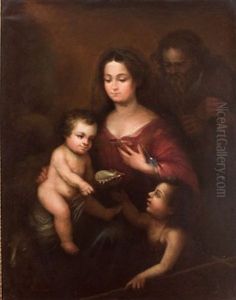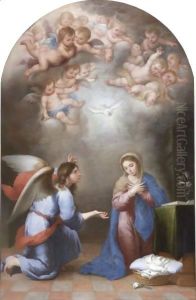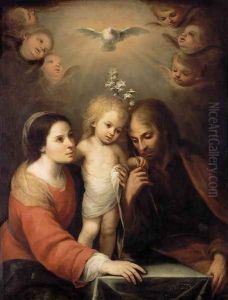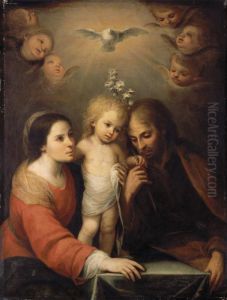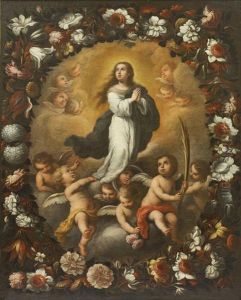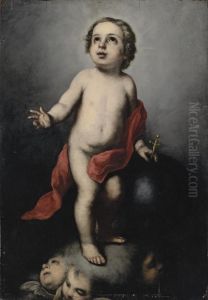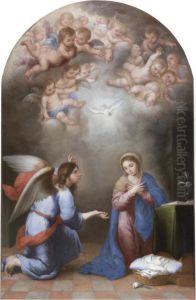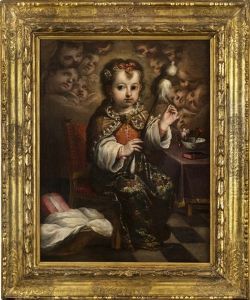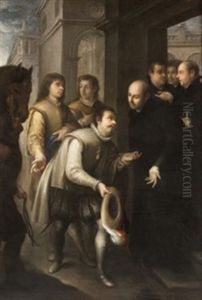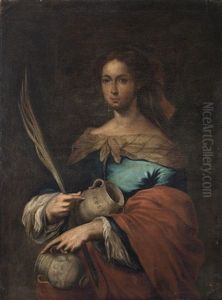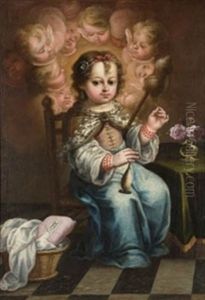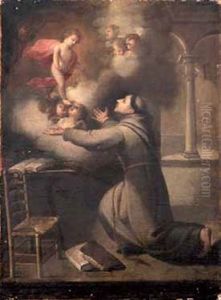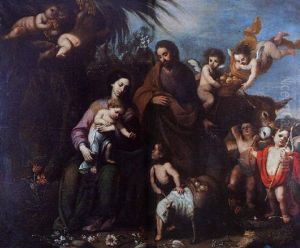Juan Simon Gutierrez Paintings
Juan Simón Gutiérrez was a Spanish painter born in Málaga in 1643. His work is generally associated with the Baroque period, a time when art was characterized by dramatic expression, deep color, and intense light and shadow. While not as widely recognized as some of his contemporaries, Gutiérrez contributed to the rich tapestry of Spanish art during a period marked by significant religious, political, and cultural changes.
Gutiérrez's early life and training are not well-documented, which is not uncommon for artists of his time. However, it is believed that he was active as an artist primarily in his hometown of Málaga. He was likely influenced by the prevailing artistic trends of the Spanish Baroque, which in turn was influenced by the broader European Baroque movement. Spanish Baroque art was particularly noted for its emotive qualities and its use of chiaroscuro—a technique that plays with light and dark to create a sense of volume and depth.
During his lifetime, Juan Simón Gutiérrez would have witnessed the tail end of the Habsburg dynasty's rule in Spain and the beginning of the Bourbon dynasty with the War of Spanish Succession. These political upheavals often affected patronage and the thematic demands on artists. Gutiérrez's works are not as well-known or as pervasive as those of his peers, such as Bartolomé Esteban Murillo or Francisco de Zurbarán, but they nonetheless represent an important facet of the Spanish Baroque style, particularly in the region of Andalusia.
Gutiérrez's body of work included religious paintings, as this was a primary genre for artists of the Baroque period, especially in Catholic Spain. His paintings would have been used for altarpieces, devotional images, and instructional purposes in churches and convents. He may have also created portraits and other secular works, although any such pieces are less documented or have not survived to the present day.
Juan Simón Gutiérrez passed away in 1718. While his fame may not have spread widely beyond his local region during his lifetime, posthumous recognition has been afforded to him, albeit modestly, as an artist who contributed to the rich artistic heritage of Spain. His works, to the extent that they are known, are appreciated for their embodiment of the spiritual fervor and artistic intensity that characterizes the Baroque era.
